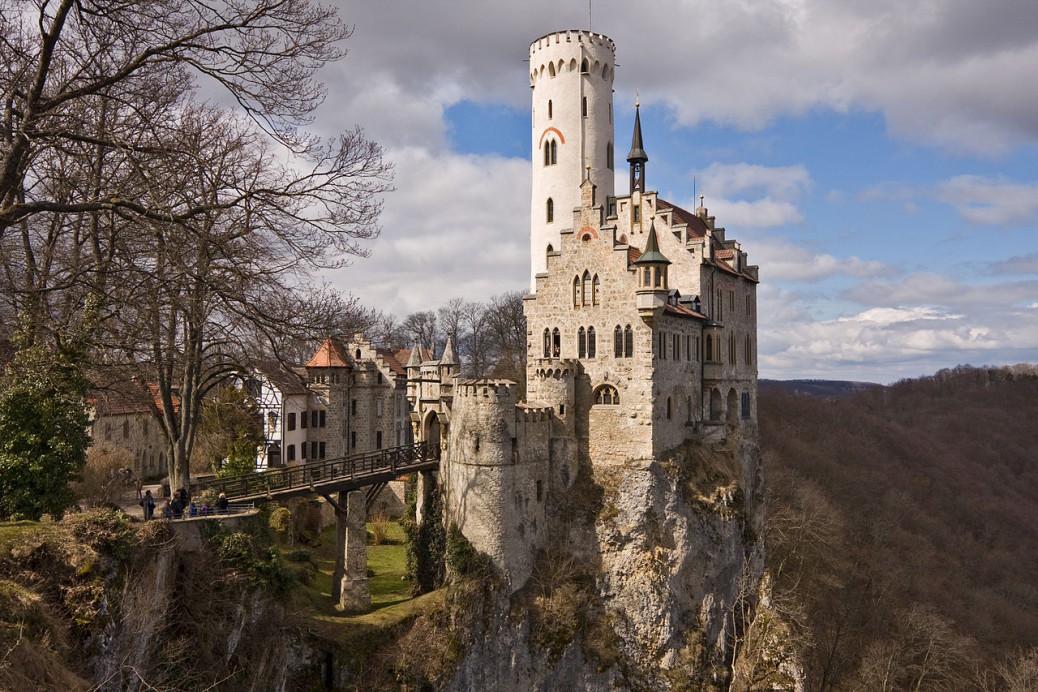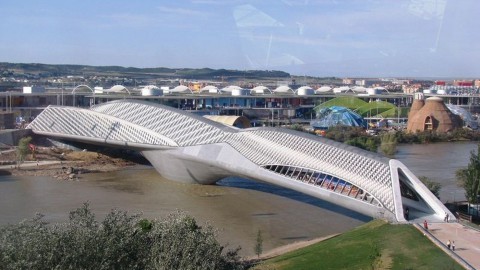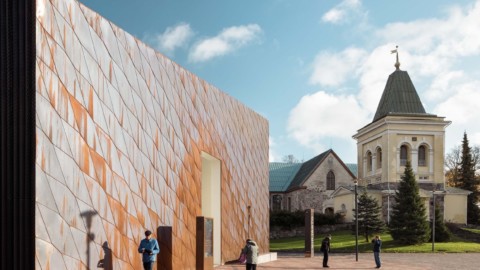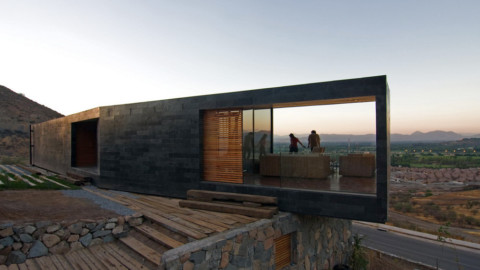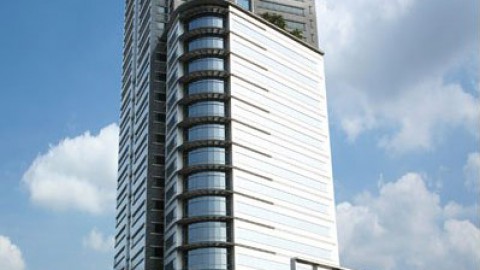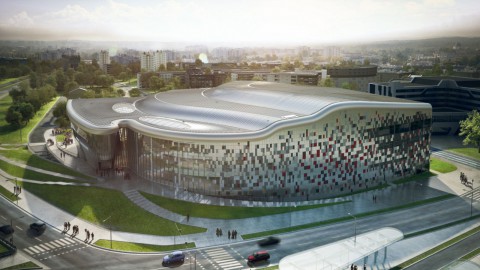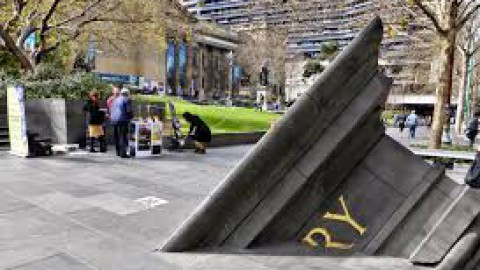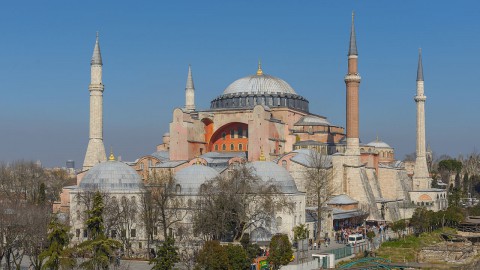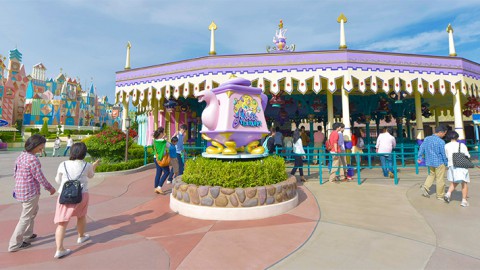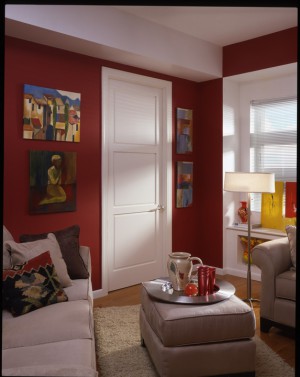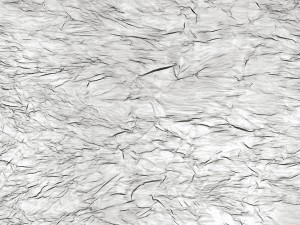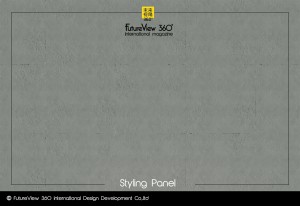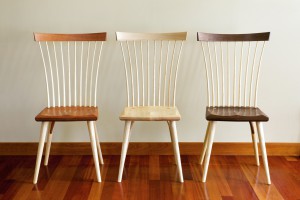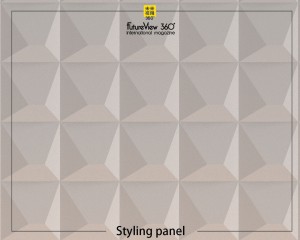Lichtenstein Castle 利希滕斯坦城堡
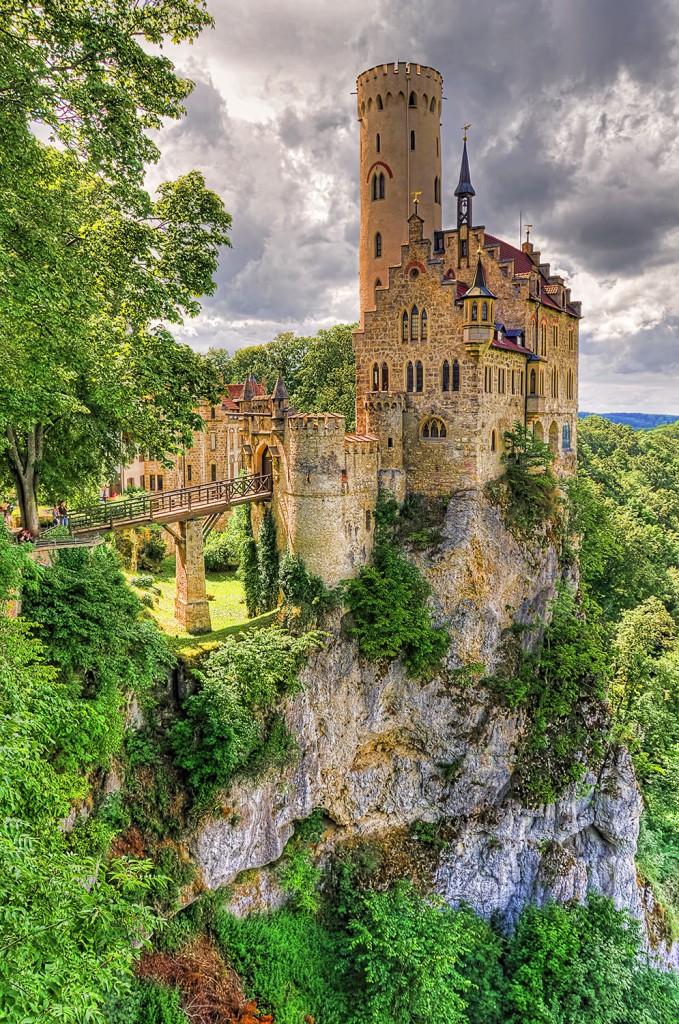
Lichtenstein Castle (Schloss Lichtenstein) is a privately owned tourist attraction built in Gothic Revival style and located in the Swabian Jura of southern Germany. It was designed by Carl Alexander Heideloff and has been described as the “fairy tale castle of Württemberg.” It overlooks the Echaz valley near Honau, Reutlingen in the state of Baden-Württemberg. The modern castle was inspired by the novel Lichtenstein (1826) by Wilhelm Hauff and was built in 1840–1842. The ruins of the medieval castle that inspired the novel are a few hundred meters away. The name Lichtenstein translates as “shining stone.”
利希滕斯坦城堡(Schloss Lichtenstein)是一座私人擁有的旅遊景點,以哥特復興風格建造,位於德國南部的施瓦本汝拉。 它由Carl Alexander Heideloff設計,被描述為“符騰堡的童話城堡”。 俯瞰著Baden-Württemberg州Reutlingen的Honau附近的Echaz山谷。 現代城堡的靈感來自Wilhelm Hauff的小說Lichtenstein(1826年),建於1840年至1842年。 迷人小說的中世紀城堡遺址距離酒店僅有數百米。 利希滕斯坦這個名字翻譯為“閃亮的石頭”。
Etymology:Lichtenstein
Shining stone
General information
Status:Rebuilt
Type:Castle
Architectural style:Gothic revival
Biedermeier
Classification:Fairy tale castle
Location:Reutlingen, Baden-Württemberg
Town or city:Honau
Country:Germany
Coordinates:48°24′24″N 9°15′29″ECoordinates: 48°24′24″N 9°15′29″E
Elevation:817 metres (2,680 ft) (NN)
Current tenants:Duke Wilhelm Albert von Urach
Construction started:1840
Completed:1842
Inaugurated:1842
Renovated:1980, 1998–2002
Client:Duke Wilhelm of Urach
Owner:Dukes of Urach
Design and construction
Architect:Carl Alexander Heideloff
詞源:列支敦士登
閃亮的石頭
一般信息
狀態:重建
類型:城堡
建築風格:哥特復興
比德邁
分類:童話城堡
地點:巴登 – 符騰堡州羅伊特林根
城鎮:Honau
國家:德國
坐標:48°24’24“N 9°15’29”ECoordinates:48°24’24“N 9°15’29”E
海拔:817米(2,680英尺)(NN)
現任租戶:Duke Wilhelm Albert von Urach
施工開始:1840年
完成:1842
開幕:1842
裝修:1980年,1998年至2002年
客戶:Urach的Duke Wilhelm
所有者:Urach公爵
設計和施工
建築師:Carl Alexander Heideloff
Geography
The castle is located on an escarpment that marks the northwestern edge of the Swabian Jura. It is in the Reutlingen district and has an altitude of 817 metres (2,680 feet). and about 250 metres (820 feet) above the Echaz river, a small tributary of the Neckar river. The ruins of Lichtenstein Castle’s medieval predecessor, the Burg Alt-Lichtenstein, lies 500 metres (1,600 feet) away.
地理
城堡位於一個懸崖上,標誌著施瓦本汝拉的西北邊緣。 它位於羅伊特林根(Reutlingen)區,海拔817米(2,680英尺)。 距離內卡河的一條小支流Echaz河約250米(820英尺)。 利希滕斯坦城堡的中世紀遺址Burg Alt-Lichtenstein遺址距離酒店有500米(1,600英尺)。
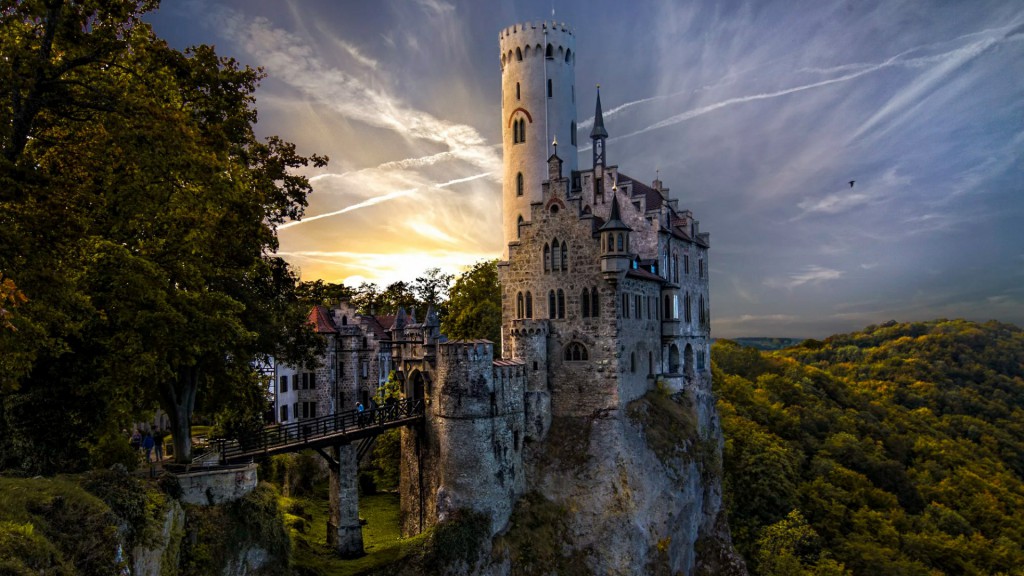
Previous structures
Beginning around 1100, a castle belonging to a family of ministerials of the counts of Achalm and later counts of Württemberg, was located on the escarpment above the source of the river Echaz. The castle and its denizens, the lords of Lichtenstein, were not friendly with the Free Imperial City of Reutlingen and were thus under frequent attack. The old castle was destroyed twice, once during the imperial civil war of 1311 and again by the citizens of Reutlingen sometime between 1377 and 1381. A new castle was built in 1390 some 500 metres (1,600 ft) from the ruins of the old one. The site selected was the same as that of the current structure. It was one of the most impressive fortifications of the Late Middle Ages. Despite such features as early casemates that made it nearly unassailable, the castle ceased to be the ducal seat in 1567 and fell into disrepair. During the Thirty Years’ War (1618–48), it was taken over by the Tyrolean line of the Habsburgs following the death of the last member of the Lichtenstein family in 1687 during the Great Turkish War. The coat of arms of their family, a pair of golden angel wings on a blue background, is still displayed in the Great Hall of the castle.
In 1802, King Frederick I of Württemberg came into possession of the castle, dismantled it to its foundations and replaced it with a hunting lodge.
以前的結構
從1100年左右開始,一座屬於Achalm和後來屬於符騰堡州的一個部長級家族的城堡位於Echaz河源頭上方的懸崖上。城堡及其居民,列支敦士登的領主,與羅伊特林根自由皇城並不友好,因此遭到頻繁襲擊。這座古老的城堡曾被摧毀過兩次,一次是在1311年的帝國內戰期間,再次是羅特林根市民在1377年至1381年之間的某個時期。一座新城堡建於1390年,距舊舊城遺址約500米(1,600英尺)。選擇的站點與當前結構的站點相同。它是中世紀晚期最令人印象深刻的防禦工事之一。儘管早期的案例使得它幾乎無懈可擊,但這座城堡在1567年不再是公爵的座位並且年久失修。在三十年戰爭期間(1618年至1848年),在大土耳其戰爭期間1687年利希滕斯坦家族最後一名成員去世後,它被哈布斯堡王朝的蒂羅爾線所取代。他們家的徽章,藍色背景上的一對金色天使翅膀,仍然在城堡的大廳裡展出。
1802年,符騰堡州的弗雷德里克一世(King Frederick I)佔領了這座城堡,拆除了它的基礎並用狩獵小屋取而代之。
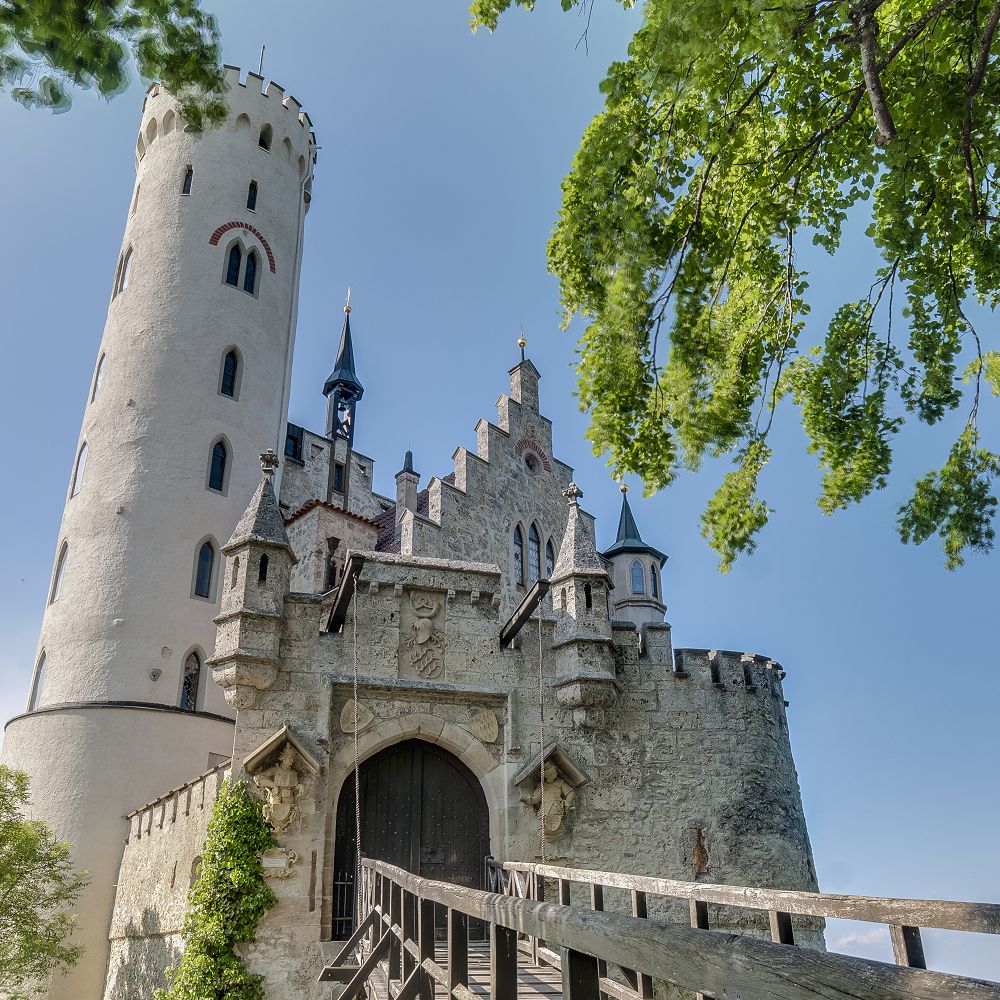
Modern castle
As a consequence of 19th-century Romanticism, medieval virtues like chivalry became increasingly popular among the elites. Parallel to this, medieval architecture, primarily Gothic style, returned to public attention in Germany with the unfinished Cologne Cathedral, leading to the rise of Gothic Revival architecture. Other notable examples of this romantic infatuation with medieval structures and architecture are the Votive Church of Vienna and Neuschwanstein Castle in Bavaria. This nostalgic longing for the medieval past, spurred on by the works of authors such as Hugh Walpole, Sir Walter Scott, and John Ruskin, meant that architectural had once again turned from the Classical to the Gothic style of architecture.
In 1826, German poet and patriot Wilhelm Hauff published his book Lichtenstein, in which the castle, the book’s namesake, played a major role. Hauff’s novel was inspired by the historical romances of Walter Scott, some of which Hauff reviewed and wrote a parody about. King Frederick’s cousin, Count (later Duke) Wilhelm von Urach, a German patriot, who was very interested in medieval history, art, and architecture, was so inspired by the book that he purchased the estate — at that time merely another crumbling ruin in the Swabian Jura — from the king in 1837, after negotiations for the purchase with the resident groundskeeper Philipp Freiherr von Hügel and his successor.
Desiring an accurate emulation of a medieval castle to live in and house his substantial collection of medieval arts, arms, and armor, Wilhelm recruited architect and restorationist Carl Alexander Heideloff after turning down designs by Württemberg court painter Franz Seraph Stirnbrand and Christian Wilhelm von Faber du Faur – designs that differed substantially from today’s structure. Construction of the New Lichtenstein Castle began in 1840 and was managed by Johann Georg Rupp . This structure, its design heavily influenced by Count Wilhelm, used the ancient foundations of the castle of 1390, and stood up to three stories tall, with a curtain wall and courtyard to complete the castle complex. A barbican and a sprawling outer bailey, complete with corner bastions and turrets, was constructed in 1857.
Following this, the castle was then decorated within and without by Nuremberg painter and architect Georg Eberlein . The most important works in the castle are “Death of the Virgin Mary” by Michael Wolgemut and two altar panels by an unknown Austrian artist called the “Master of Lichtenstein.”
The castle was completed in 1842, and the king was present for its inauguration ceremony. In 1869, it became the official residence of the dukes of Urach.
After the Revolution of 1848, then-Count Wilhelm became the first duke of Urach. A passionate artillery officer, he desired to improve the defenses of his castle and so began to build pre-outwork caponiers in the style of the imperial Fortress of Ulm (though not on a scale as grand) and a trench along the fortress to deter attack. Later he had cannons placed in the bastions on the walls. From 1898 to 1901 the two buildings left of the main gate, the Ducal Palace and the old groundskeepers house, were constructed and expanded respectively. A motion to build a cableway up to the castle in 1911 was rejected because it was believed it would ruin the beauty of the castle.
現代城堡
作為19世紀浪漫主義的結果,像騎士精神這樣的中世紀美德在精英中越來越受歡迎。與此同時,中世紀建築,主要是哥特式風格,在德國與未完工的科隆大教堂重新引起公眾的注意,導致哥特復興建築的興起。其他值得注意的例子就是維也納的Votive教堂和巴伐利亞的新天鵝堡。在休·沃爾波爾,沃爾特·斯科特爵士和約翰·拉斯金等作家的作品的推動下,這種對中世紀過去的懷舊渴望意味著建築再次從古典建築轉向哥特式建築風格。
1826年,德國詩人和愛國者威廉·豪夫(Wilhelm Hauff)出版了他的著作“利希滕斯坦”(Lichtenstein),其中同名的城堡城堡發揮了重要作用。豪夫的小說靈感來自沃爾特斯科特的歷史浪漫故事,其中一些霍夫評論並寫了一篇模仿。弗雷德里克國王的堂兄,伯爵(後來的杜克大學)德國愛國者威廉·馮·烏拉赫,對中世紀的歷史,藝術和建築非常感興趣,他對這本書的啟發深受他購買莊園的啟發 – 當時只是另一個崩潰的廢墟斯瓦比亞汝拉 – 來自1837年的國王,在與居民場地管理員Philipp FreiherrvonHügel和他的繼任者談判購買之後。
為了準確地模仿中世紀城堡居住並收藏他的大量中世紀藝術品,武器和盔甲,Wilhelm在Württemberg宮廷畫家Franz Seraph Stirnbrand和Christian Wilhelm von Faber du拒絕設計後招募了建築師和修復主義者Carl Alexander Heideloff Faur – 與今天的結構大不相同的設計。新利希滕斯坦城堡的建造始於1840年,由Johann Georg Rupp管理。這個結構,其設計深受威廉伯爵的影響,使用了1390年城堡的古老基礎,並且高達三層,有一個幕牆和庭院,以完成城堡建築群。 1857年建造了一個巴比肯和一個龐大的外貝利,有角落堡壘和砲塔。
在此之後,城堡隨後由紐倫堡畫家和建築師Georg Eberlein裝飾。城堡中最重要的作品是Michael Wolgemut的“聖母瑪利亞之死”和兩位名叫“Lichtenstein大師”的奧地利未知藝術家的祭壇畫板。
這座城堡於1842年竣工,國王出席了就職儀式。 1869年,它成為了Urach公爵的官邸。
1848年革命後,威廉伯爵成為第一位烏拉克公爵。作為一名充滿激情的砲兵軍官,他希望改善城堡的防禦能力,因此開始以烏爾姆帝國要塞的風格建造前作戰前的俘虜(儘管規模不大),並沿著堡壘建造戰壕以阻止襲擊。後來他把大砲放在牆上的堡壘裡。從1898年到1901年,正門左側的兩座建築物,公爵宮和舊的地面保護室分別建造和擴建。 1911年建造一條通往城堡的索道的動議遭到拒絕,因為它被認為會破壞城堡的美麗。
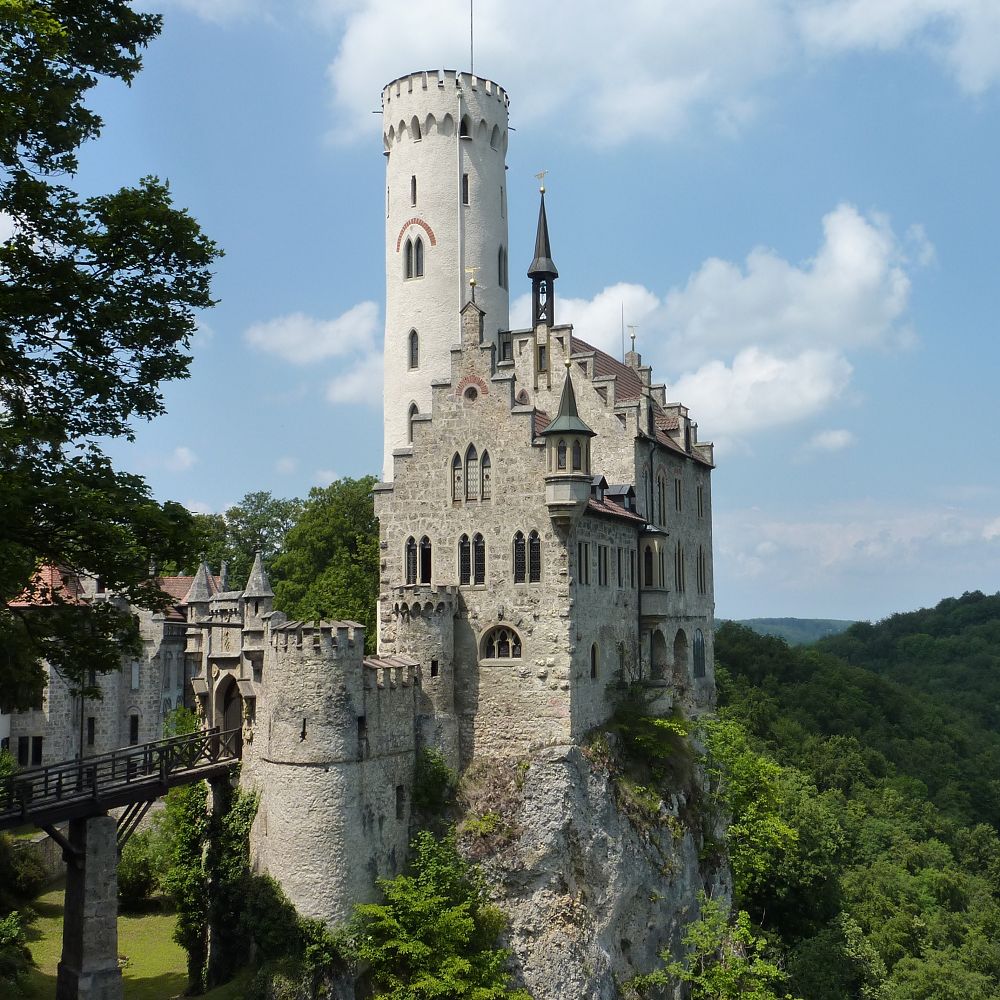
Restoration
The castle was damaged during World War II, but efforts to restore the castle began in the immediate aftermath of the war. Once again, and thanks to local non-profit organizations like the Wüstenrot Foundation and Community Fund for the Preservation of Lichtenstein Castle, the walls were restored in 1980, followed by the second floor in 1998. The upper floor and roof were restored in 2002.
Still owned by the dukes of Urach, the castle is open to the public via guided tour, although some rooms may not be entered. The courtyard is open to the general public, allowing the gun emplacements on the walls to be viewed.
恢復
城堡在第二次世界大戰期間遭到破壞,但在戰爭結束後立即開始恢復城堡。 再次,感謝當地的非營利組織,如Wüstenrot基金會和保護利希滕斯坦城堡的社區基金,牆壁於1980年恢復,隨後是1998年的二樓。上層和屋頂於2002年恢復。
該城堡仍然由Urach公爵擁有,通過導遊帶領公眾開放,但有些房間可能無法進入。 庭院向公眾開放,可以看到牆壁上的砲台。
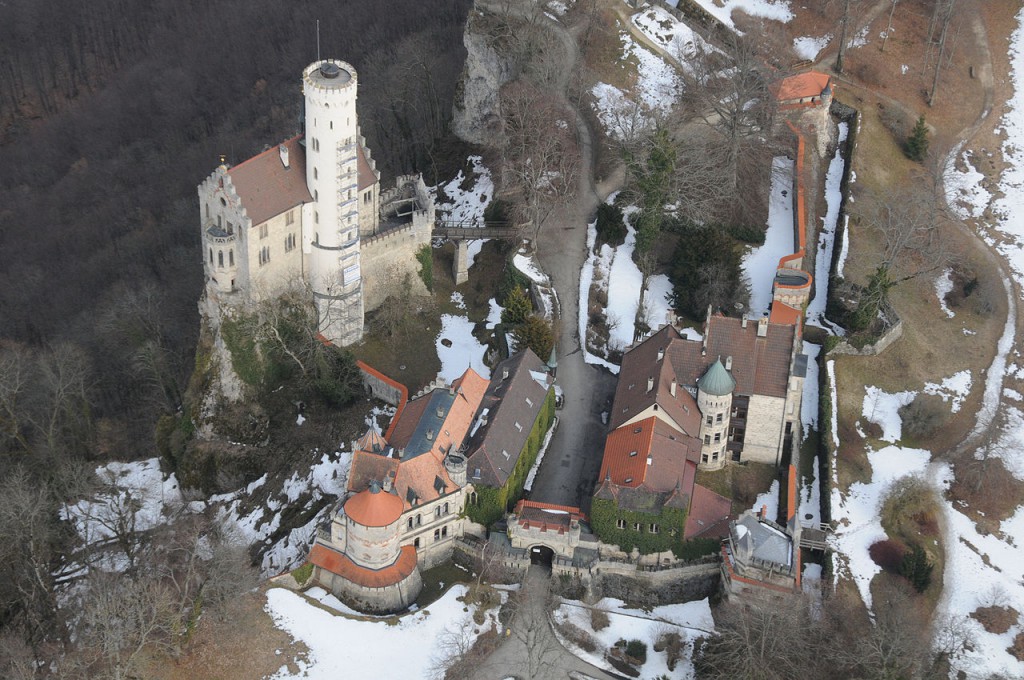
FROM:https://en.wikipedia.org/wiki/Lichtenstein_Castle_(W%C3%BCrttemberg)
FROM:SIGHTSEEING auf Schloss Lichtenstein in GERMANY
FROM:A CINEMATIC LICHTENSTEIN CASTLE – GERMANY – CANON G7X MARK II
Don’t you think it’s addictive?
Want to know more about the beauty of architecture?
Come and join our members to explore the beauty of architectural design.
覺得看得不過癮嗎?
想要知道更多建築之美嗎?
快來加入我們的會員,一同探索建築設計之美。
The above article is purely for appreciation and sharing purposes, as well as the construction of new technology and the public can be in-depth understanding of the information at the same time there are sources, will be able to query, no use of the document as a commercial transaction, if illegal, please inform the We will immediately remove the site, thank you for cooperation.
以上文章純粹作為欣賞及分享用途,以及將建築新型技術傳遞給與大眾能夠深入了解,同時資料還有來源,將可查詢,絕無使用該文件資料作為商業交易行為,如有違法請務必告知該網站我們將立即處理撤除,謝謝合作。

